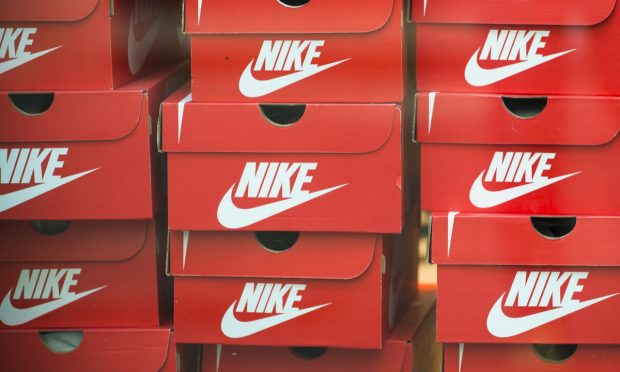Factory Closures Cause 10-Plus Weeks of Lost Production for Nike

Factory closures in Vietnam and Indonesia due to the pandemic have caused Nike to lose 10 weeks of production since mid-July, leading to a revised short-term outlook for the company and warnings that demand will likely outpace supply for the next several quarters.
Chief Financial Officer Matt Friend said transit times in North America for the Oregon-based company are now almost twice as long as pre-pandemic levels, primarily because of port and rail congestion as well as labor shortages. The European market has also seen deteriorating transit times, and retail sales in China slowed because of regional closures and lower levels of foot traffic.
“We expect all geographies to be impacted by these factors,” Friend said on a conference call with investors and analysts.
Read more: Adidas, Nike Among Brands Hit With Supply Chain Issues Amid Vietnam COVID Rise
Nike is one of several brands impacted by sweeping factory shutdowns across Vietnam, a hot spot for sneaker manufacturing. The country has recorded over 700,000 COVID-19 cases since the beginning of July and has kept lockdowns in place in high-risk regions. Vietnam appears to be ready to lift these restrictions, though, with Hanoi, the country’s capital, easing some mandates earlier this week.
Friend said some of Nike’s factory partners have also begun to have their reopening plans approved, though factories in Vietnam aren’t expected to begin reopening until next month, which will severely impact the availability of holiday and spring merchandise.
Because of this, Nike revised its outlook for the coming quarters, expecting revenue growth in the second quarter to be flat or down in the low single digits and revenue in the full fiscal year to grow in the mid-single digits, as opposed to prior guidance that expected full-year growth in the low double digits. “This situation is going to be dynamic and it’s not going to be linear,” Friend said.
The athletic apparel and sneaker giant is also looking to other regions to maximize production in other regions such as China and leverage the use of air transit to weather the temporary supply chain issues.
“Over the past 18 months, we’ve demonstrated our ability to manage through turbulence to emerge even stronger and better positioned,” President and CEO John Donahoe said on the conference call. “And that’s what we’ll continue to do as we navigate through these current supply chain issues.”
A Digital Head Start
Nike is also facing increasing pressure from startup sneaker brands such as Allbirds and Roger Federer-backed On Holding, both of which have recently filed to go public. ThirdLove also took a swipe at the company earlier this week when debuting its new line of sports bras and activewear; and Adidas has been taking pages out of Nike’s D2C playbook in an effort to double its eCommerce business over the next five years.
Related: Sneaker Startup IPOs Take a Run at Nike
But Donahoe told analysts that Nike is actually in a stronger position relative to its competition than prior to the pandemic as consumers accelerate their shift to digital, playing into the D2C strategy the company launched in 2017.
“When we get to the other side of this, we’ll be in even stronger shape,” he said. “We’ll be more agile, more direct and more digital.”
Nike reported that its revenue in the first quarter, ended Aug. 31, was over $12 billion, up 16% compared to the same period last year. Nike’s direct-to-consumer (D2C) sales, which include both online and in-store sales, were $4.7 billion, up 28% year over year because of increased traffic to the brand’s owned physical retail, which saw 24% growth.
Overall, Nike’s digital business grew by double digits in the quarter even as consumers continued to shop more in-person. D2C digital sales are now 21% of the brand’s total revenue, and Friend said the company is “well positioned” to reach its goal of 40% of sales by 2025.
“What’s clear across the marketplace, both owned and partnered, is how online to offline is becoming second nature,” Donahoe said. According to PYMNTS data, online and mobile cross-channel consumers, or those who prefer to shop digitally and pick up in store, has increased by at least 28% since the pandemic began.
